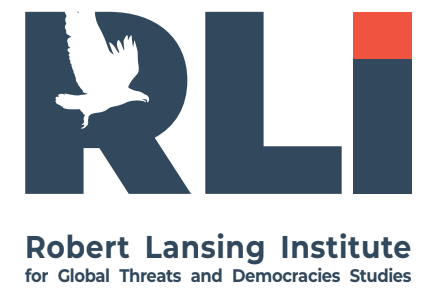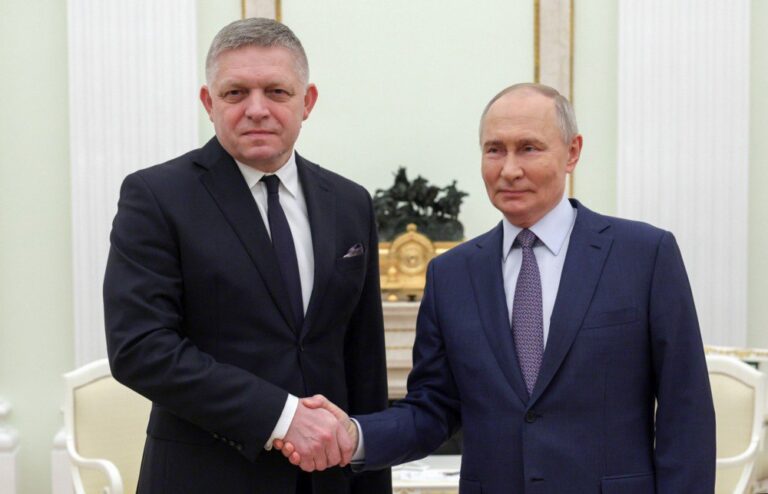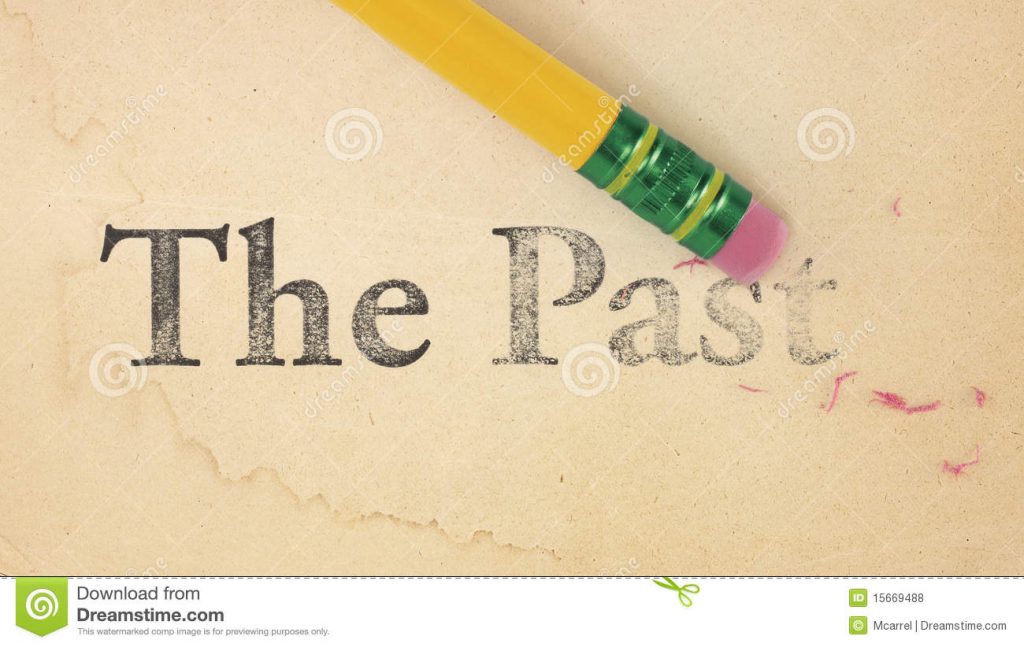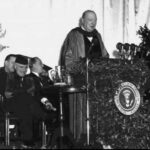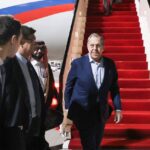As of April 2025, two European leaders—Slovak Prime Minister Robert Fico and Serbian President Aleksandar Vučić—have confirmed their intention to attend Russia’s Victory Day celebrations in Moscow on May 9, marking the 80th anniversary of the Soviet Union’s victory over Nazi Germany. This decision stands in contrast to the broader European Union stance, which has largely distanced itself from such events following Russia’s full-scale invasion of Ukraine in 2022.
Slovakia: Robert Fico’s Pro-Russian Alignment
Prime Minister Robert Fico has openly accepted President Vladimir Putin’s invitation, emphasizing the importance of honoring the Red Army’s role in defeating fascism. Fico stated that attending the celebrations is a gesture of respect for the historical truth about World War II and the Soviet Union’s contribution to the victory over Nazism.
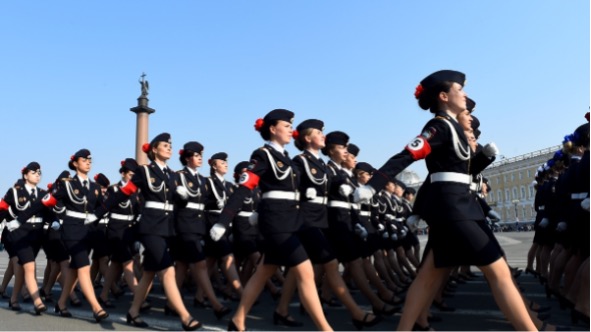
More on this story: Russia’s political line: neo-Nazism
Since returning to power in 2023, Fico has taken a pro-Russian stance, halting military aid to Ukraine and advocating for peace talks with Russia. His government has faced criticism from the EU for these positions, which diverge from the bloc’s collective approach to the Ukraine conflict.
🇷🇸 Serbia: Aleksandar Vučić’s Historical Emphasis
President Aleksandar Vučić of Serbia has also confirmed his attendance at the Victory Day parade, highlighting the significance of the event in commemorating the defeat of fascism. Vučić emphasized the shared historical ties between Serbia and Russia, noting the Soviet Union’s role in liberating Serbia during World War II.
Serbia, while a candidate for EU membership, has maintained close relations with Russia, balancing its European aspirations with historical and cultural connections to Moscow.
EU’s Position and Broader Context
The European Union has largely refrained from participating in Russia’s Victory Day celebrations since the 2022 invasion of Ukraine. EU foreign policy chief Kaja Kallas has urged member states to boycott the event, emphasizing solidarity with Ukraine and condemning Russia’s ongoing aggression.
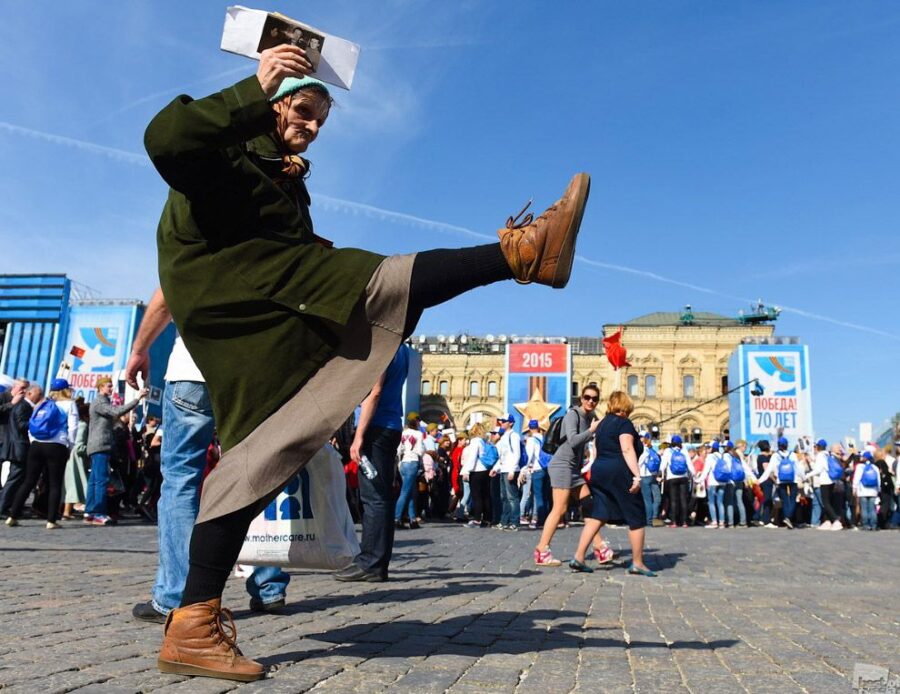
More on this story: Victory Day as foreign policy and public administration instrument
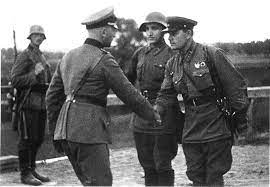
More on this story: Russian intelligence plotting primitive psyop for May 9
The EU’s position reflects a broader effort to isolate Russia diplomatically and economically in response to its actions in Ukraine. Participation in the Victory Day parade by EU member states is seen as undermining this unified stance.
1. The Role of May 9 in Memory Politics
- Victory Day is part of a broader “state-sponsored memory regime”.
- You could analyze how the Russian state manipulates historical memory to shape contemporary identity and loyalty.
- Example: The government criminalizes “distorting the memory” of WWII. This shows that May 9 is not just a holiday—it’s state-protected ideology.
✅ 2. Victory Day and Authoritarian Resilience
- Use it as a lens to explore authoritarian legitimation.
- The rituals, parades, and symbols help shore up regime stability by:
- Cultivating emotional loyalty.
- Distracting from domestic problems (economic decline, sanctions, corruption).
- Reinforcing Putin’s image as protector of Russia’s greatness.
✅ 3. Sociopolitical Role of the “Immortal Regiment” March
- The grassroots-born “Бессмертный полк” (Immortal Regiment), where citizens march with portraits of WWII relatives, has been co-opted by the state.
- What started as a personal act of remembrance has become a tool of state-managed patriotism.
- Consider the tension between genuine grassroots memory and state appropriation.
✅ 4. Regional and International Variants of May 9
- Many former Soviet states observe Victory Day differently now:
- Ukraine shifted to May 8 and downplays Soviet symbols.
- Baltic states treat Soviet “liberation” as occupation.
- This creates a fractured memory space in the post-Soviet world, with Russia trying to maintain a dominant narrative.
✅ 5. Militarization of Culture
- May 9 increasingly emphasizes military power over civilian loss.
- Schoolchildren in military uniforms, tanks in parades, pro-war music videos—all show how the holiday helps normalize militarism in Russian society.
- This matters in the context of the Ukraine war, where glorification of force is part of public opinion shaping.
✅ 6. Gender and Generational Messaging
- You could add insight into how Victory Day communicates gender roles:
- Strong men as soldiers and protectors.
- Women as mothers and keepers of memory.
- Also, it’s a bridge between older generations (who lived it or grew up with its stories) and younger ones who’ve only known Putin’s curated version.
Shift from Previous Years
Prior to 2022, Victory Day celebrations in Moscow were attended by various international leaders, including those from the EU. However, the geopolitical landscape has shifted dramatically due to Russia’s actions in Ukraine. The 2025 attendance of Fico and Vučić marks a departure from the EU’s collective approach, highlighting internal divisions and the challenges of maintaining a unified foreign policy.
Implications and Consequences
- Diplomatic Strain: Fico’s and Vučić’s attendance may strain relations with other EU member states and could be perceived as tacit approval of Russia’s actions in Ukraine.
- EU Cohesion: Their participation underscores the difficulty of achieving consensus within the EU on foreign policy matters, particularly concerning Russia.
- Russian Narrative: Russia may leverage the presence of European leaders to bolster its narrative of legitimacy and international support amid ongoing sanctions and diplomatic isolation.
In summary, the decision by Slovak and Serbian leaders to attend the 2025 Victory Day celebrations in Moscow reflects a complex interplay of historical ties, national interests, and divergent foreign policy approaches within Europe. Their participation contrasts with the broader EU stance and may have significant diplomatic repercussions. In summary, the decision by Slovak and Serbian leaders to attend the 2025 Victory Day celebrations in Moscow reflects a complex interplay of historical ties, national interests, and divergent foreign policy approaches within Europe. Their participation contrasts with the broader EU stance and may have significant diplomatic repercussions.
Recommendations for EU Authorities: Responding to European Leaders Visiting Moscow on May 9
1. Reaffirm the Common EU Position on Russia’s War in Ukraine
- Publicly restate the EU’s united condemnation of Russia’s invasion of Ukraine and its continued attacks on civilians.
- Clarify that participation in symbolic events in Moscow during wartime does not reflect the EU’s shared values and position.
2. Privately Engage with Slovakia and Serbia
- Open diplomatic backchannels with Bratislava and Belgrade to express concern about the symbolism and political implications of their leaders’ attendance.
- Emphasize the risk of eroding EU credibility and unity, especially in front of international partners and Ukraine.
3. Limit Strategic Exposure of Diverging States
- Reassess intelligence-sharing, defense cooperation, and strategic alignment with member states that act contrary to the EU’s collective foreign policy.
- Consider suspending participation of such countries in sensitive EU foreign affairs or defense forums until alignment is reaffirmed.
4. Highlight and Support Pro-European Voices
- Publicly support civil society and political opposition figures within Slovakia and Serbia who advocate for EU integration and a principled stance toward Ukraine.
- Increase visibility of EU humanitarian and military aid to Ukraine to reinforce the contrast between active support and political ambiguity.
5. Counter Russian Disinformation
- Launch a targeted strategic communication campaign to undermine Kremlin propaganda that portrays these visits as evidence of European support or division.
- Monitor Russian state media and respond with real-time rebuttals and clarification of EU positions.
6. Strengthen Sanction Enforcement and Expand Measures
- Signal readiness to expand sanctions if Russia uses these visits to justify continued aggression or escalate hostilities.
- Target Russian information operations and entities involved in orchestrating diplomatic events to manipulate Western divisions.
7. Engage the Public and Media in EU States
- Equip EU missions and spokespeople with clear messaging that explains:
- Why the visits are problematic.
- How they differ from traditional diplomatic norms.
- What the EU is doing to maintain unity and stand by Ukraine.
8. Clarify Serbia’s Accession Path
- Use the event as a catalyst for revisiting Serbia’s EU accession trajectory, conditioning future progress on alignment with the EU’s Common Foreign and Security Policy (CFSP).
- Encourage closer scrutiny of Belgrade’s strategic partnerships with authoritarian powers.
Key Risks to Address:
- Perception of EU disunity, weakening Brussels’ diplomatic clout.
- Normalization of relations with Russia while war continues.
- Russian exploitation of symbolic participation to rally domestic and Global South support.
Desired Outcomes:
- Preserve the EU’s moral authyority and strategic cohesion.
- Support Ukraine by preventing geopolitical ambiguity.
- Send a clear signal to Russia and the international community that divergence from EU consensus has political consequences.
Would you like this structured as a brief policy memo or formatted into presentation slides as well?
Victory Day (День Победы) in Russia, is immensely important for several interwoven historical, political, and symbolic reasons.
3. Legitimacy of the State and the Military
- Since Putin’s rise, 9 May has become a platform to showcase Russia’s military might through massive parades—especially the one on Red Square.
- The state links modern Russia’s legitimacy to the USSR’s victory, presenting itself as the rightful heir to the legacy of defeating fascism.
- It allows the government to cast itself as the defender of peace and stability, even while engaging in war.
4. Narrative Control – Then and Now
- The Kremlin uses Victory Day to frame current events through the WWII lens—such as:
- Calling Ukraine “fascist” to justify military actions.
- Drawing comparisons between WWII and today’s geopolitical struggles.
- It’s a powerful tool for propaganda and messaging, both domestically and internationally.
🌍 5. Diplomatic Signaling
- Who attends the Moscow parade—or doesn’t—is read as a signal of support, neutrality, or disapproval of Russia’s policies.
- For example:
- After 2014 (Crimea), many Western leaders stopped attending.
- In 2024, very few foreign leaders showed up due to the war in Ukraine—highlighting Russia’s growing isolation.
- When leaders do come, Russia uses their presence as validation of its global importance and alliances (e.g., with post-Soviet states, China, or African partners).
Summary:May 9 isn’t just about remembering the past—it’s a carefully curated political ritual to glorify the military, promote loyalty to the state, justify foreign policy, and reassert Russia’s self-image as a fortress surrounded by enemies but undefeated.
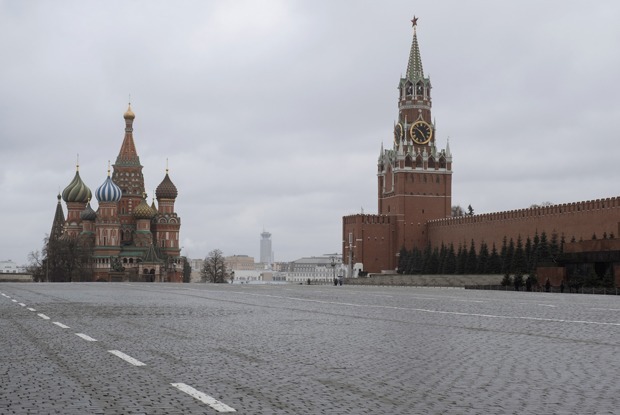
More on this story: Moscow parade as a test for European leaders
